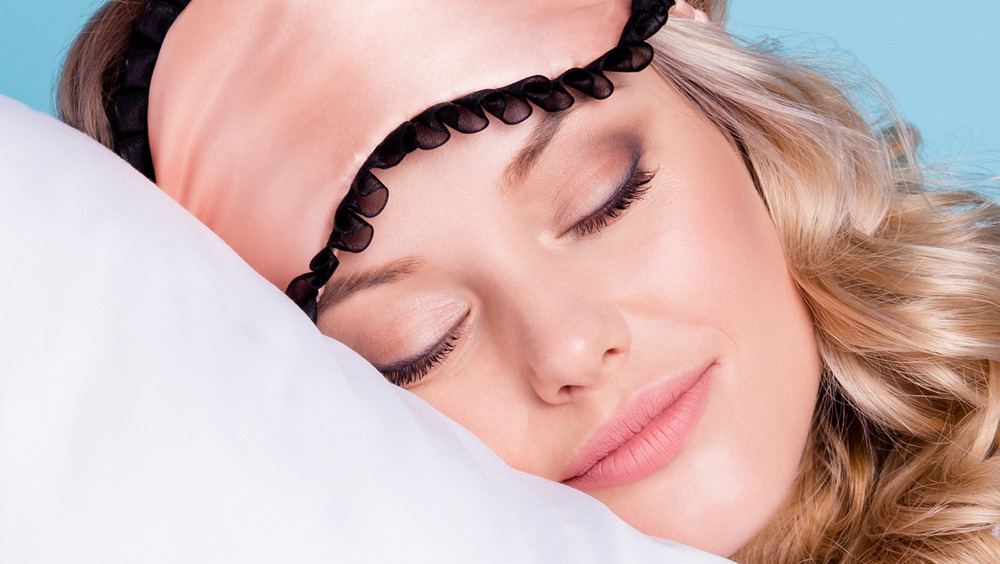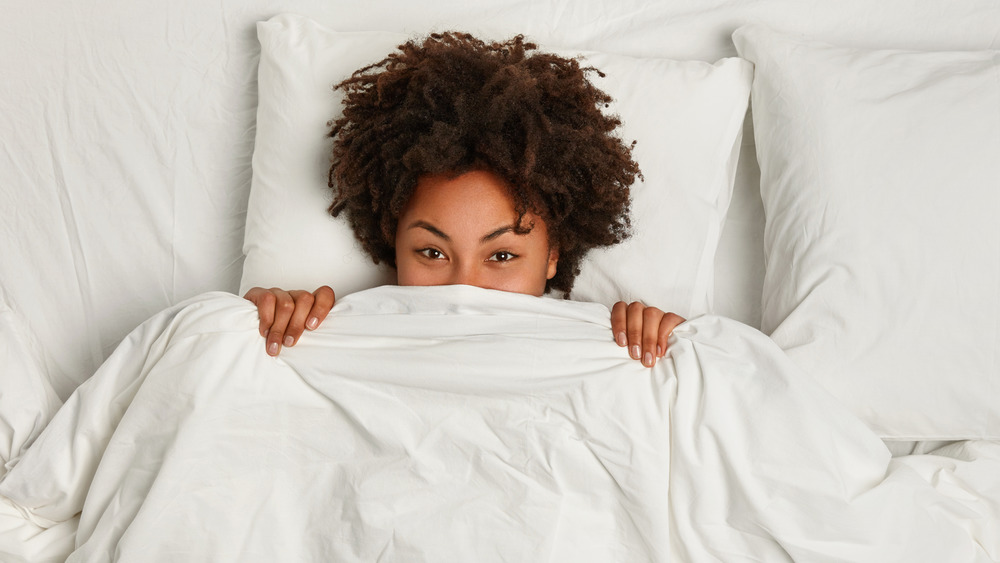How To Improve Your Hair In Your Sleep
We all know the horrors of waking up in the morning with bad bedhead. It can be such a major time-suck when you're rushing to get your day started, but did you know that there are things you can be doing in your sleep to combat this?
The easiest thing you can do to improve your hair while you sleep is to stop sleeping with wet hair. Your hair is at its most unprotected when it's wet (via Luxy Hair). It's important to dry your hair completely before you snooze, otherwise you could run the risk of tugging or severe damage.
Another cause of nighttime hair damage is sleeping with your hair tied up. Putting your hair up in an elastic band seems harmless, but it's actually putting excessive tension on your hair shaft and roots (via John Frieda). According to the Belgravia Hair Loss Centre, wearing elastic bands can not only snap strands of hair, which leave behind split ends, but any form of tight ponytail or bun can actually pull out your hair follicles. If you have to put your hair up, John Frieda suggests "doing the twist." Use a fabric scrunchie to twist your hair up in a loose top knot. The elastic is covered by the fabric, which eliminates any snagging, and it's a gentle way to keep your hair secure.
Improving your hair with satin, silk, and the history of head wraps
A quick switch you can make to your nightly routine is swapping out your old, cotton pillowcases for smoother satin or silk ones. Your cotton pillowcase can actually cause hair breakage from the rough material, whereas a satin or silk material can help your hairstyle stay in place (via L'Oréal Paris). This material is gentler than other fabrics, plus it will help avoid dryness that other materials can cause from excessive tossing and turning at night.
This material has also been used as headwraps to preserve natural hairstyles for hundreds of years. While this traditional attire can be traced back through many Sub-Saharan African cultures (via Naturally Curly), enslaved Black women were required to wear head coverings both as a form of protection from the sun and lice, as well as a way to indicate inferiority. These scarfs were still worn after the abolishment of slavery in America, and during the 1970s became a "central accessory of [Black Power]."
While sleeping with a satin headscarf has been called "chic" (via Luxy Hair), it's important to know and understand the history behind its usage. Wearing a headscarf or silk bonnet will help prevent frizz and also maintain your hairstyle for the next day. Just like the silk pillowcase, this smooth material is a simple solution to improve your hair while you sleep.

